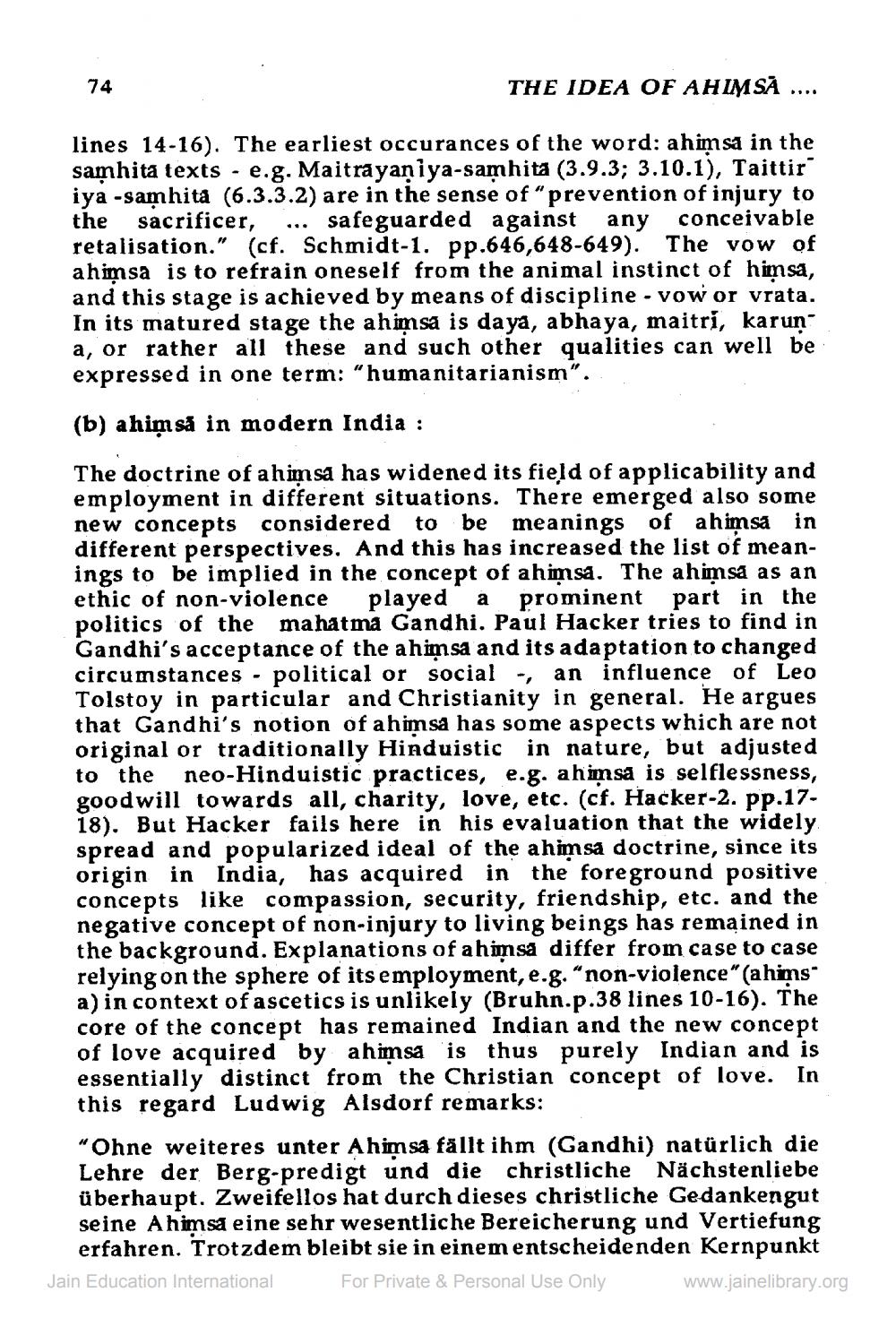________________
74
THE IDEA OF AHIMSA ....
lines 14-16). The earliest occurances of the word: ahiņsa in the samhita texts - e.g. Maitrayaniya-samhita (3.9.3; 3.10.1), Taittir iya -samhita (6.3.3.2) are in the sense of "prevention of injury to the sacrificer, ... safeguarded against any conceivable retalisation." (cf. Schmidt-1. pp.646,648-649). The vow of a himsa is to refrain oneself from the animal instinct of himsa, and this stage is achieved by means of discipline - vow or vrata. In its matured stage the ahimsa is daya, abhaya, maitri, karun a, or rather all these and such other qualities can well be expressed in one term: "humanitarianism".
(b) ahiņså in modern India : The doctrine of a hiņsa has widened its field of applicability and employment in different situations. There emerged also some new concepts considered to be meanings of ahimsa in different perspectives. And this has increased the list of meanings to be implied in the concept of ahimsa. The ahimsa as an ethic of non-violence played a prominent part in the politics of the mahatma Gandhi. Paul Hacker tries to find in Gandhi's acceptance of the ahimsa and its adaptation to changed circumstances - political or social -, an influence of Leo Tolstoy in particular and Christianity in general. He argues that Gandhi's notion of ahimsa has some aspects which are not original or traditionally Hinduistic in nature, but adjusted to the neo-Hinduistic practices, e.g. ahimsa is selflessness, goodwill towards all, charity, love, etc. (cf. Hacker-2. pp.1718). But Hacker fails here in his evaluation that the widely spread and popularized ideal of the ahimsa doctrine, since its origin in India, has acquired in the foreground positive concepts like compassion, security, friendship, etc. and the negative concept of non-injury to living beings has remained in the background. Explanations of a himsa differ from case to case relying on the sphere of its employment, e.g. “non-violence" (ahimsa) in context of ascetics is unlikely (Bruhn.p.38 lines 10-16). The core of the concept has remained Indian and the new concept of love acquired by ahimsa is thus purely Indian and is essentially distinct from the Christian concept of love. In this regard Ludwig Alsdorf remarks: "Ohne weiteres unter Ahimsa fällt ihm (Gandhi) natürlich die Lehre der Berg-predigt und die christliche Nächstenliebe überhaupt. Zweifellos hat durch dieses christliche Gedankengut seine Ahimsa eine sehr wesentliche Bereicherung und Vertiefung
erfahren. Trotzdem bleibt sie in einem entscheidenden Kernpunkt Jain Education International For Private & Personal Use Only www.jainelibrary.org




